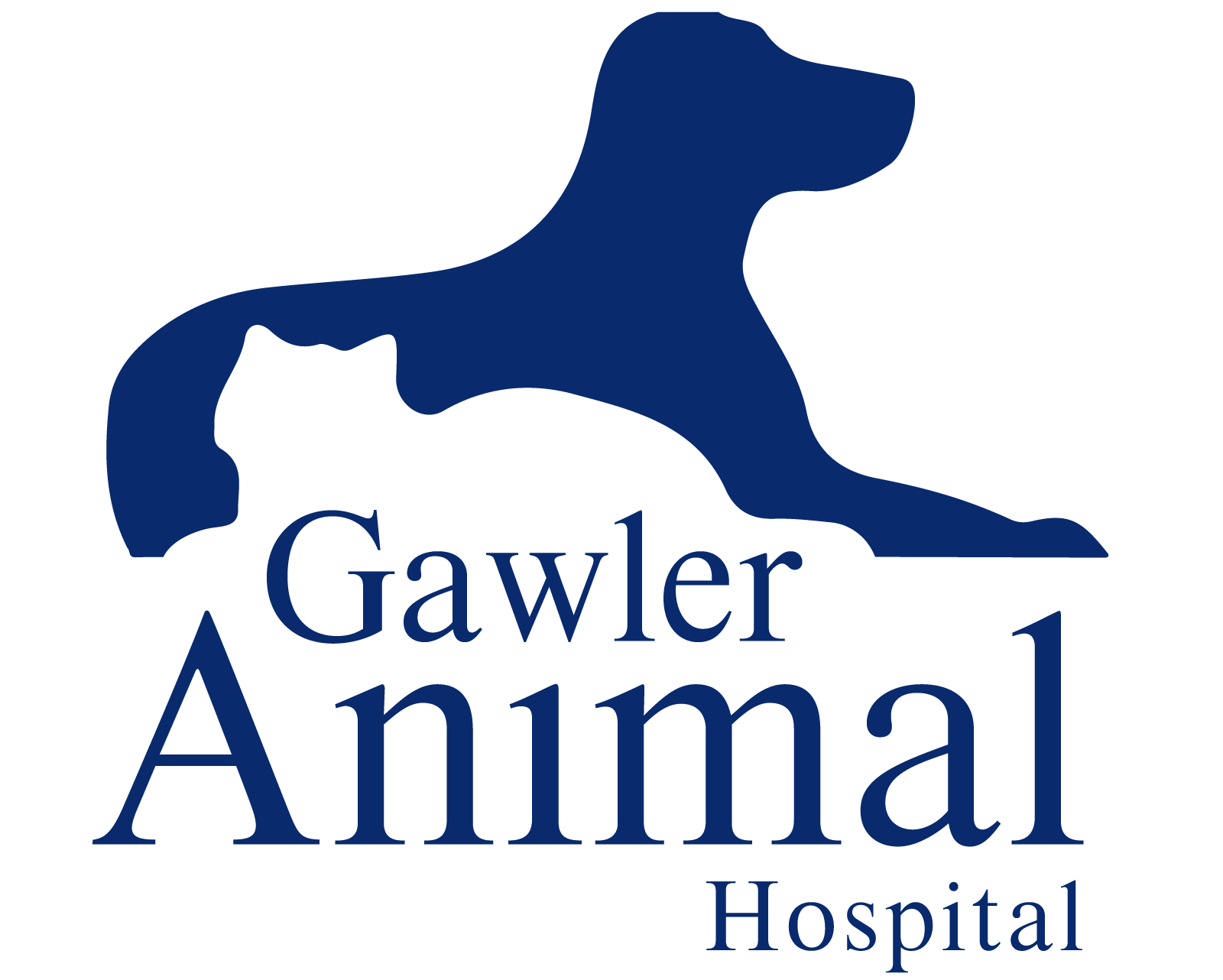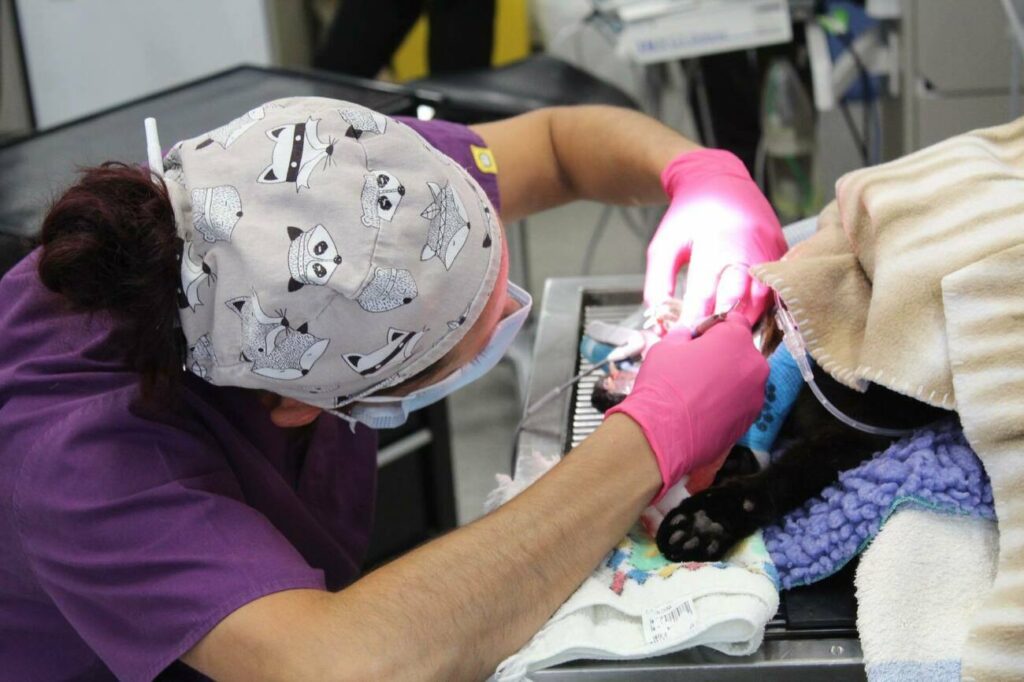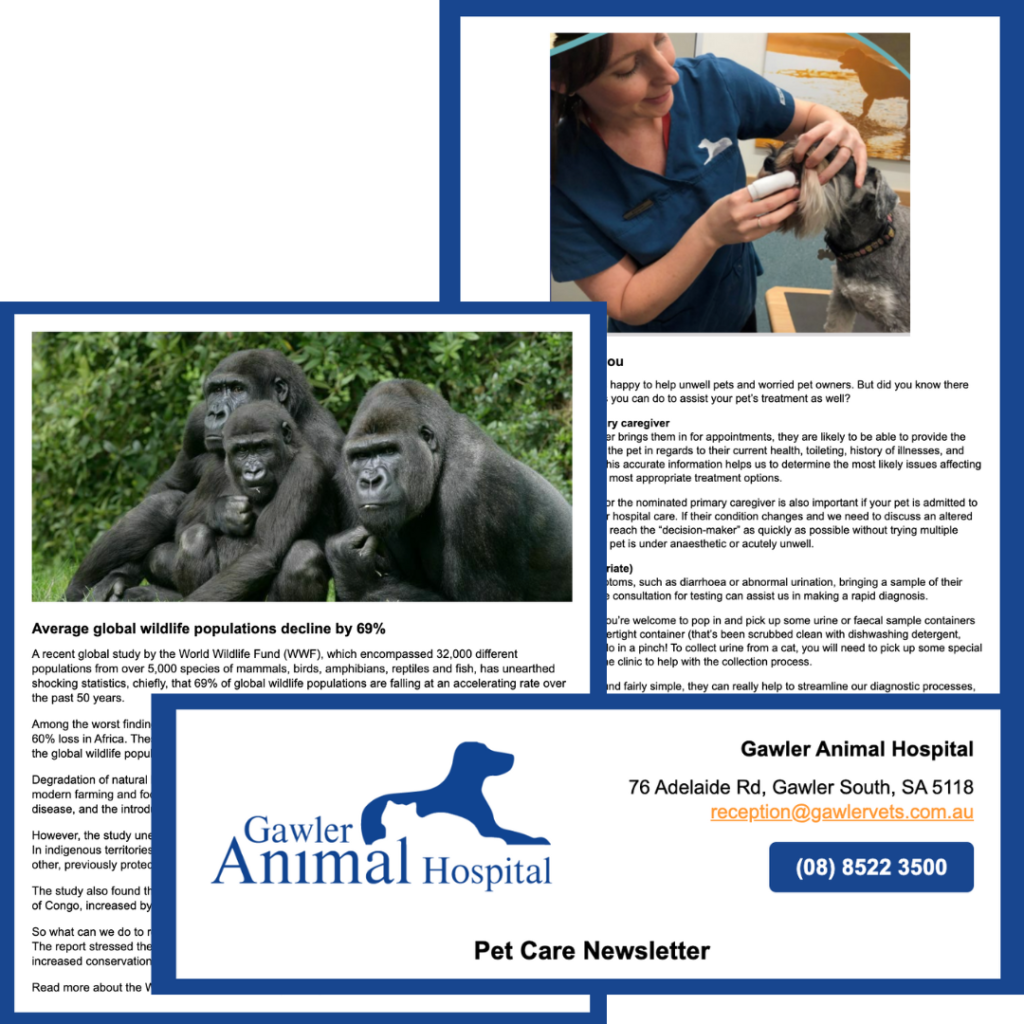ITS DENTAL MONTH…
Dr. Alyssa’s Client Information Sheet
(Almost) everything you need to know about: Dental disease
Causes:
Bacteria; Crowded teeth; Genes; Immune response; Wet foods
Disease progression:
1: Plaque/tartar is produced by bacteria living on the surface of the tooth (yellow/brown in colour)
2: Bacteria move to also live under under the gum >> this leads to an increase in toxin production that is the cause for bad breath, gingivitis and has the ability to break down bone! – This is the last stage reversible by cleaning!
3: Bone destruction creates pockets that are difficult to clean
4: Bone loss/destruction leads to tooth mobility/wobbliness
Signs:
Smelly breath; chattering jaws (cats); preference for wet food; yellow/brown coloured teeth; red inflamed gums; chewing on one side of the mouth; dropping food when eating; may have NO obvious signs; clients often report signs of “getting older”
So why does it matter if my pet has dental disease?
-Bacteria from the mouth spread via the bloodstream to other areas of the body, where they cause damage and other forms of disease (liver, kidneys + heart most commonly)
-Pain! Dental disease is painful! Described as being quite a dull, constant pain (like a headache) that can really affect an animal’s mood. Abscess’s however, cause more of a sharp, throbbing, strong pain
-Often no sign of pain is noticed prior to the dental procedure (pets are very good at hiding it!)
-BUT clients regularly report a few days after their pets dental “they just seem happier, more affectionate, younger”
What can we do?
#1= Remove the current disease = short day stay
– The ONLY thing that can remove the well-attached and solidly mineralized dental disease present, is a high powered, ultrasonic scaler
-Brushing + chews can only remove NEW plaque = ineffective for the current disease
#2= Home care to slow the redevelopment/progression of your pet’s dental disease
– Tooth brushing: just like us, this is the best thing we can do for our pets!
– Plaque hardens within 48hours, so our aim is to brush it off before this happens!
NOTE: it is important to do this in a way that your pet will tolerate aka positive training
– Dental diets: Hills t/d; Royal Canin Dental
A more enjoyable but slightly less effective way to “brush” the teeth
– Have crisscrossed fibers that ‘brush’ as the patient chews
– Oravet: medicated dental chewOuter layer that physically removes calculus/plaque (similar to other chews) Inner (white) layer that is medicated and ‘coats’ the teeth to prevent bacterial attachment
– Maxiguard oral solution or wipes
-Acts like a toothpaste but no brushing required! Apply and will self-distribute
-Slow-release antiseptic with anti-inflammatory properties that promotes healing
-Use as a preventative but also right after surgery is performed also
-Bones/Antlers/Hooves: studies show that these can remove surface calculus (the yellow stuff)
-But do not necessarily address the underlying bacteria i.e. the disease can still progress
-Bones also notably increase the risk of fracturing teeth
Dental x-rays are taken to ensure nothing is missed


